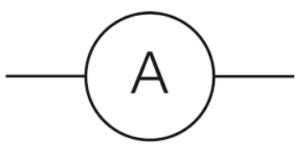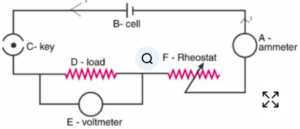Current Electricity Exe-9A Long Ans Concise Physics ICSE Class 9 Selina Publishers. There is the solutions of Long Answer type Questions of your latest textbook which is applicable in 205-26 academic session. Visit official Website CISCE for detail information about ICSE Board Class-9 current electricity class 9 syllabus.

Current Electricity Exe-9A Long Answer Type
Concise Physics ICSE Class 9 Selina Publishers
| Board | ICSE |
| Class | 9 |
| Subject | Physics |
| Writer / Publication | Concise selina Publishers |
| Chapter-9 | Current Electricity |
| Exe-9A | Electric Current |
| Topics | Solution of Exe-9(A) Long Answer Type |
| Academic Session | 2025-2026 |
Exercise- 9A Electric Current
Current Electricity Long Answer Concise Physics ICSE Class-9 Selina Publishers
Page – 215
LONG ANSWER TYPE:
Que-1: Distinguish between d.c. and a.c.
Ans: In direct current, the voltage is always constant, and the electricity flows in a certain direction. In contrast, in alternating current, the voltage periodically changes from positive to negative and from negative to positive, and the direction of the current also periodically changes accordingly.
Que-2: Distinguish between a closed circuit and an open circuit, with the use of suitable labelled diagrams.
Ans:

1. Open circuit: An open circuit is a circuit in which the path is incomplete which means there is no flow of current.
2. Closed circuit: A closed circuit is a circuit in which the path is complete and there is a flow of current in the entire path.
Que-3: State three differences between primary and secondary cells.
Ans: three differences between primary and secondary cells are :-
| primary cell | secondary cell |
| chemical reactions are irreversible. | chemical reactions are reversible. |
| When current is drawn from a primary cell, chemical energy is converted into electrical energy. | When current passes in a secondary cell, electrical energy is converted into chemical energy, when current is drawn from it, chemical energy is converted into electrical energy. |
| Primary cell cannot be recharged. | Secondary cell can be recharged. |
Que-4: Write symbols and state the functions of each of the following components in an electric circuit : (i) key, (ii) cell, (iii) rheostat, (iv) ammeter, and (v) voltmeter.
Ans:
(i) Key
It is used to switch the current on or off in the circuit.

(ii) Cell
It acts as a source of direct current for the circuit.

(iii) Rheostat
It is used to control the current in the circuit. It is basically a variable resistance.


(iv) Ammeter
It is used to measure the current flowing through the circuit.

(v) Voltmeter
It is used to measure the potential difference between two points of a circuit.

Que-5: In the electric circuit shown in fig. 9.16 label the parts A , B , C , D , E , and F . state the function of each part. Show in the diagram the direction of flow of current.

Ans: The function of each part is as follows:
A- is the Ammeter, which measure the flow of current in the circuit
B- Cell: acts as a source of direct current for the circuit
C- key: Key puts the current, on and off in the circuit
D – Load: load is an appliance connected in a circuit which can be a combination of different electrical components or a resistance (bulb).
E – Voltmeter: It measures the potential difference between two points of a circuit.
F – Rheostat: it controls the flow of control in a circuit

Que-6:
(a) Complete the circuit given in Fig. 9.17 by inserting between the terminals A and C, an ammeter.
(b) In the diagram mark the polarity at the terminals of ammeter and indicate clearly the direction of flow of current in the circuit, when the circuit is complete.
(c) Name and state the purpose of Rh in the circuit.

Ans:
(a)

(b)

(c) A rheostat is used to control the current in the circuit.
—: end of Current Electricity Exe-9A Long Ans Concise Physics ICSE Class 9 Selina Publishers :—
Return to:- Concise Selina Physics ICSE Class-9 Solutions
Thanks


